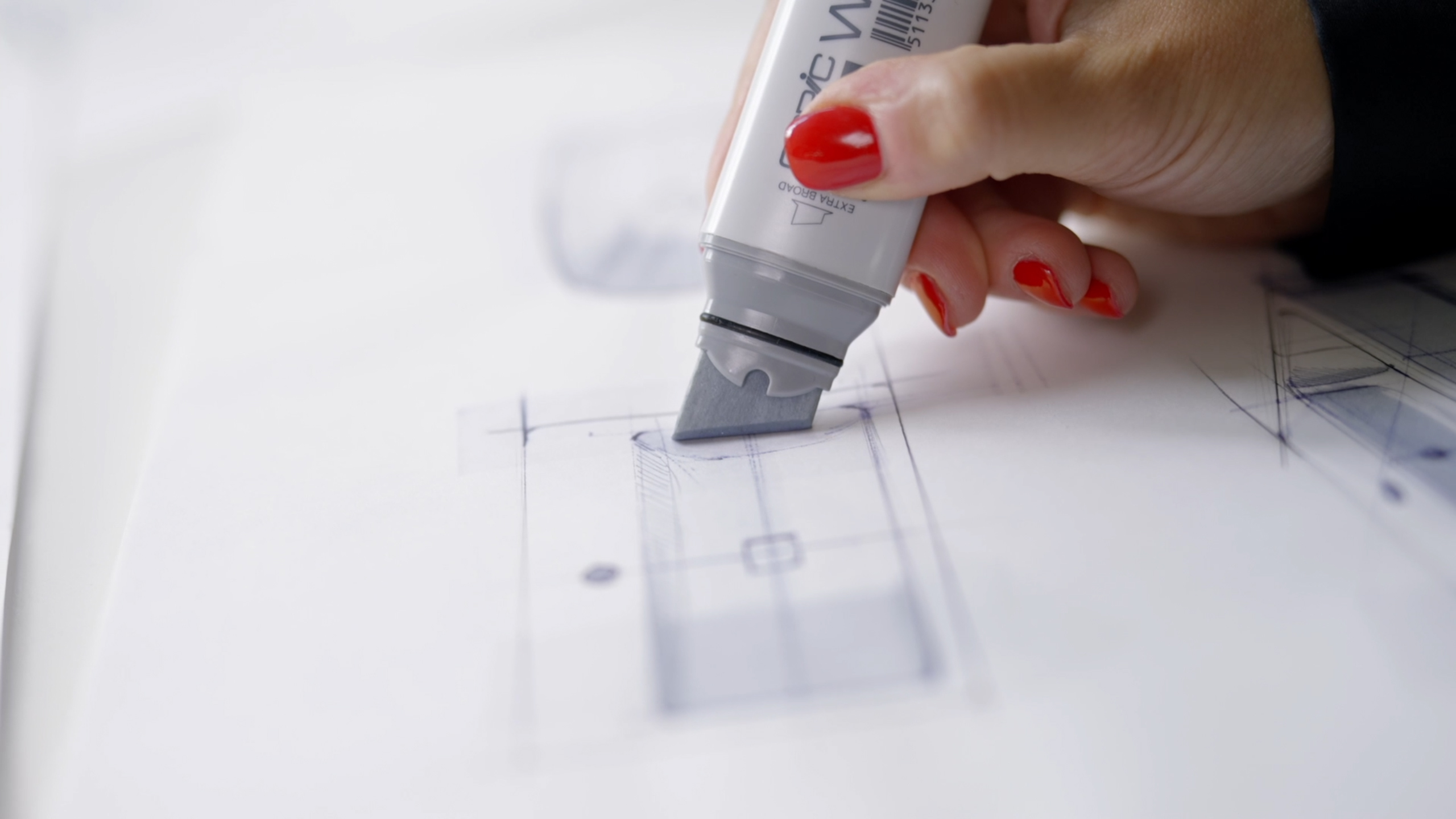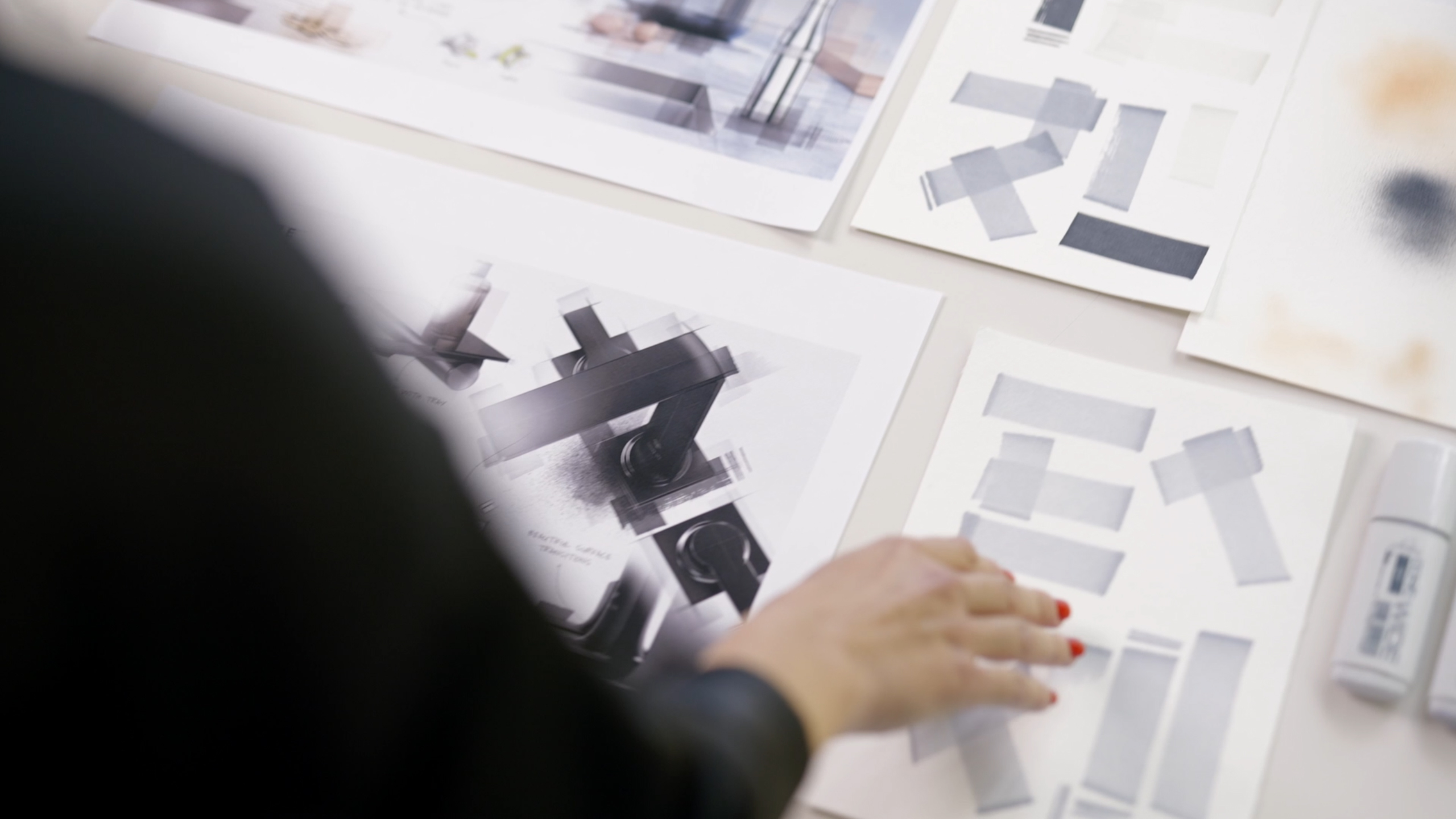- Category:
- All
- Design
- Illustration
- Manga
- Craft
The art of sketching and a unique approach to design: Interview with LIXIL Global Design
LIXIL Global Design, the in-house design team of LIXIL, is a true celebration of creativity, collaboration, and cultural diversity. The team's multifaceted skill sets combined with a unique approach to design enable and empower them to create their best work - work which has been recognized with over 550 international design awards.
Could you briefly introduce yourself and your global design team?

Lead Industrial Designer at LIXIL Global Design.
Begüm: My name is Begüm Tomruk. I’m a Lead Industrial Designer at LIXIL Global Design EMENA. I’m an Istanbul born designer and part of the design team since 2015.
At LIXIL Global Design, we transform trends and insights into experiences for our consumers and value for the LIXIL brand. With our global brand portfolio, such as American Standard, GROHE and INAX, we provide unrivaled experiences through products that are used by more than a billion people everyday. As an in-house design team, we are the "creative arm" of the company and represent the voice of the consumer across all our brands.

Creative Design Director at LIXIL Global Design.
Tomi: I am Yoichiro Tomioka – people call me Tomi – and I’m a Creative Design Director at LIXIL Global Design. I’ve been in charge of numerous creative directions, from product design to brand graphics, UI design, space design, exhibition, showroom design and much more.
At LIXIL Global Design we always work as a team. And our multidisciplinary, global design team is a true celebration of creativity, collaboration and diversity. Based in some of the most cosmopolitan and culturally diverse cities in the world – like Tokyo, Singapore, New York, London and Düsseldorf – the team builds upon the diverse skillsets we have in-house to create new and exciting designs.
Your team has created global bestsellers with innovative design and excellent functionality, which have won more than 550 global design awards. Could you tell us how these outstanding products were developed and what is important in product design?
Begüm: As designers, we have big responsibilities while bringing new products to life. While we design new products, we look at trends, consumer needs and real-life experiences. The world is changing at a fast pace, so the products should convey the key message from the latest trends. They should exist for a “good reason” and bring real benefits to the users. Longevity and sustainability, for example, always play a major role when it comes to designing new products.

Tomi: Our overall goal is to make better homes a reality for everyone, everywhere. Achieving this goal requires a deep researched understanding of our consumers. Therefore, every design process begins with consumer-centric thinking and our unique approach to research, what we call pre-search. Our design team includes a research team that discovers consumer insights and sets values through user surveys. Designers are involved in the whole process of developing ideas and drafting plans. When the hypotheses are visualized, we start sketching and creating designs.

Would you tell us how Copic is used in your design process?
Begüm: At LIXIL Global Design, sketching is an important skill set. We use design sketches in an analog and digital way during our design processes and differentiate between two kinds of sketches. Ideation and Presentation. Both sketching techniques have their reason to exist, but they are relevant for different purposes and cannot be compared.
The first technique is ideation sketching. I believe every designer creates ideation sketches during the design process. They are quick pre-study scribbles often done before the designer goes into CAD programs to build the concept in 3D. For me, the ideation starts on paper. Some ideas end up in trash and some favorite ones deserve some love. For those ones I usually use some light marker strokes with Copic Cool Gray tones to give a subtle shading. For the first layers, I generally use Copic Wide Markers in a freestyle way. Since they are just the initial sketches, there`s no need to overload them. So I just keep it simple and try to focus on giving the 3-dimensional look and the material detail.

With the second technique, presentation sketching, you create pitch-perfect advanced design drawings that usually take quite some time to produce. These require much more precision and detail than the ideation sketches and are mainly used to introduce the design idea and story internally and externally. With our latest GROHE Design sketches, we included some Copic wide marker strokes and even airbrush details done by Copic AirBrush. Wide markers create a unique layered depth when they’re used as a base on design sketches. I really like to use this method because it’s and difficult to copy. All those details create a tactile look when used together with a textured background.

Tomi: Yes, we really use Copic products for a variety of purposes. For example, our brand colors – like the INAX blue or LIXIL orange – can be used as accents for quick sketches in workshops.
When sharing something with multiple people in real time, I always have my Copic markers at hand so that coloring can be done immediately.
When did you first start using Copic markers and why did you choose Copics in particular?
Begüm: I also started to use Copic markers in my first year at the university. Analog sketching and visualization were mandatory during the first years of my industrial design education. So I wanted to develop my skills with the best tools possible. I selected Copic because I trust the product's brand and quality

Tomi: I took my first rendering class in my first year of college and Copic was required in my classes. Since then, I have never stopped to use Copic for sketching and rendering.

Digital tools and software are commonly used in industrial design these days, but how are traditional art materials like Copic used in your design process?
Begüm: We are all aware that the design process is changing. In the past, analog sketches were the only way to visualize ideas. Now designers have access to plenty of tools to visually explain their thoughts. New technologies and software have been developed with the target to ease and speed up the design process. But I believe that analog sketching is still very relevant when it comes to quickly creating and study shapes, developing and communicatingideas etc..

Tomi: Especially in real-time communication, such as workshops, when taking multiple images with multiple people at the same time. It is simply very practical and convenient.

Could you give a message to those who aspire to become a product/industrial designer?
Begüm: For us as designers, everything starts with consumer-centric thinking and a purpose-driven approach. While we do that, we follow the design process which has changed over the years. But the ideation and sketching part where we share our initial Copic scribbles with our colleagues, teams, or the design world remains as the most effective and influential part of the design process.
The sketching skillset can take your design career to another level. And we should not forget the emotional side that a sketch conveys. A sketch is not rational. It is emotional, artistic, cool and vibrant. We simply enjoy looking at it.

Tomi: Each product should be designed with a story and a good purpose behind it. It is important to consider who and where the product you are designing will be used and for what purpose. For this purpose, it is important to go out to the actual site where the product will be used, observe the customer's behavior, conduct interviews etc. Then you can develop the story and start the design process with the first scribbles and sketches on paper.
Follow LIXIL Global Design on Instagram for more valuable design content: https://www.instagram.com/lixilglobaldesign/







